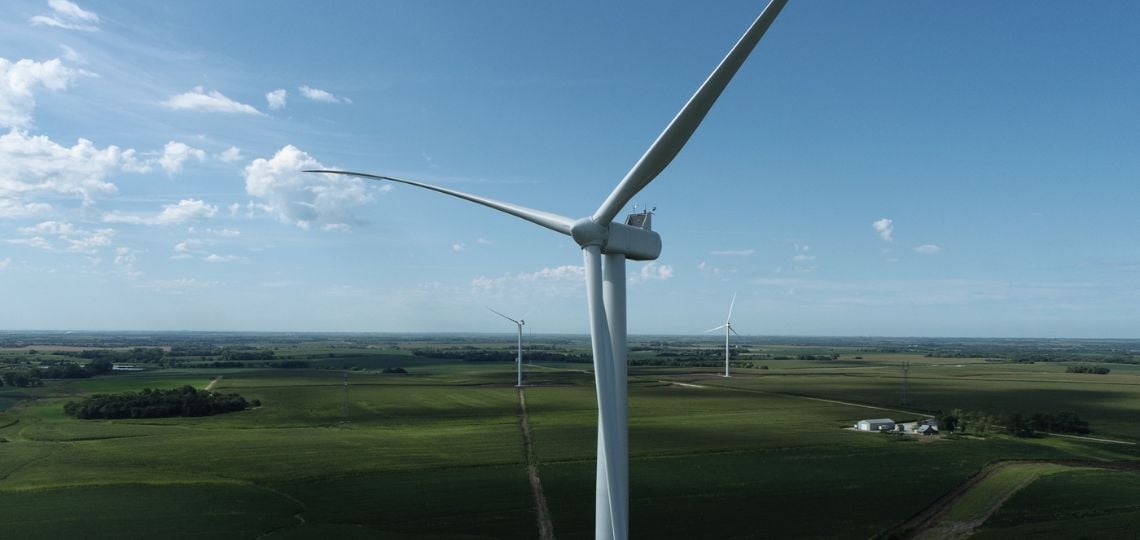EDF Renewables and OPPD sign 20-year wind power contract for Nebraska
September 24, 2024

EDF Renewables has signed a 20-year contract with Omaha Public Power District (OPPD) to supply wind-generated electricity from the 300 MW Milligan 1 wind farm, operational since 2021.
The contract is part of OPPD’s strategy to meet growing demand for electricity while diversifying its energy portfolio.
The project enables OPPD to increase its supply of renewable energy, while contributing to its mission of providing reliable and affordable electricity to local communities.
The agreement with EDF Renewables is not simply a purchase of renewable energy, but a direct response to the growing pressure to increase power generation, fueled by the state’s economic growth.
OPPD plans to add 3,200 MW of capacity by the end of the decade, with a particular focus on renewables, which are to account for 50% of these additions.
The flexibility offered by this new capacity is crucial to guaranteeing the continuity of energy supply in a region where needs are constantly increasing.
Strengthening energy supplies in a context of growth
The main objective of this partnership is to ensure a balance between energy supply and demand in Nebraska.
With a booming economy, energy needs are increasing, forcing authorities to look for reliable solutions to accompany this development.
The Milligan 1 wind farm is a key element in this strategy.
Located in a region that is ideal for wind power, it enables OPPD to harness an abundant resource to meet future needs.
Managing energy infrastructures is a complex challenge in a context where demand often exceeds forecasts.
By multiplying its sources of supply, OPPD seeks to guarantee the reliability of its network while integrating more decarbonized energy sources.
The addition of wind power capacity to its portfolio also strengthens its resilience in the face of market fluctuations and variations in demand.
Long-term economic and industrial prospects
Increasing power generation capacity through projects like Milligan 1 is not just an immediate response to current market needs.
It is also a long-term strategy to support Nebraska’s industrial and economic growth.
Energy infrastructure development is essential to attracting new investment and supporting the expansion of local businesses and industries that depend on access to reliable, affordable energy.
Wind projects like Milligan 1 are also part of a global drive to diversify energy sources, an imperative for maintaining industrial competitiveness.
By integrating renewable sources, OPPD is strengthening its ability to stabilize production costs while reducing the risks associated with fluctuating fossil fuel prices.
A project part of a global strategy
The Milligan 1 project fits perfectly into OPPD’s strategy of doubling its production capacity by 2030, with a long-term goal of carbon neutrality by 2050.
While such targets are commonplace in the industry, they are accompanied by rigorous planning and significant investment in low-emission technologies.
The addition of this capacity also enables OPPD to diversify its revenue streams, while guaranteeing price stability for its customers.
The agreement with EDF Renewables, meanwhile, reflects the growing willingness of energy producers to partner with public electricity suppliers to achieve ambitious targets for renewable generation.
The role of independent power producers in the development of renewable energies has become inescapable, with players like EDF Renewables playing a crucial role in the design, construction and operation of large-scale wind and solar farms.
Meeting the challenges of decarbonization
In the context of decarbonizing the economy, the joint initiative between OPPD and EDF Renewables underlines the importance of partnerships to accelerate the energy transition.
While the Milligan 1 project contributes to reducing emissions in the electricity sector, it is also part of a broader trend towards modernizing America’s energy infrastructure.
By integrating more renewable capacity, OPPD is preparing for future regulations that will require even greater reductions in CO2 emissions in the electricity sector.
The impact of this transition is not limited to environmental issues alone, but also touches on questions of energy security and economic competitiveness.
Investments in renewable energies, particularly wind and solar power, offer a concrete response to the challenges posed by the volatility of global energy markets and the production constraints of fossil fuels.
Search
RECENT PRESS RELEASES
Related Post


